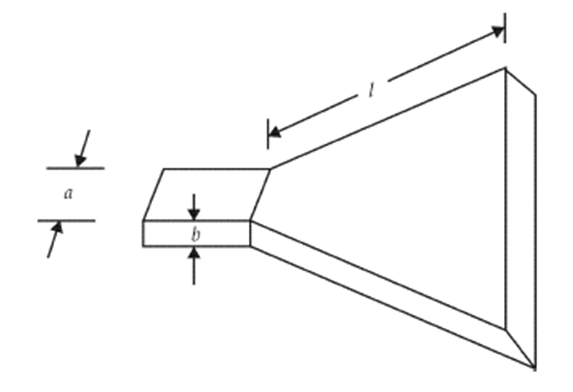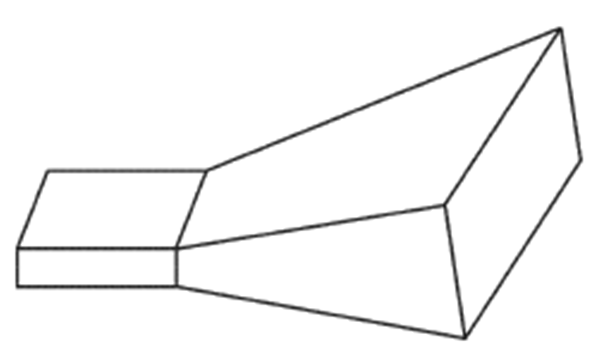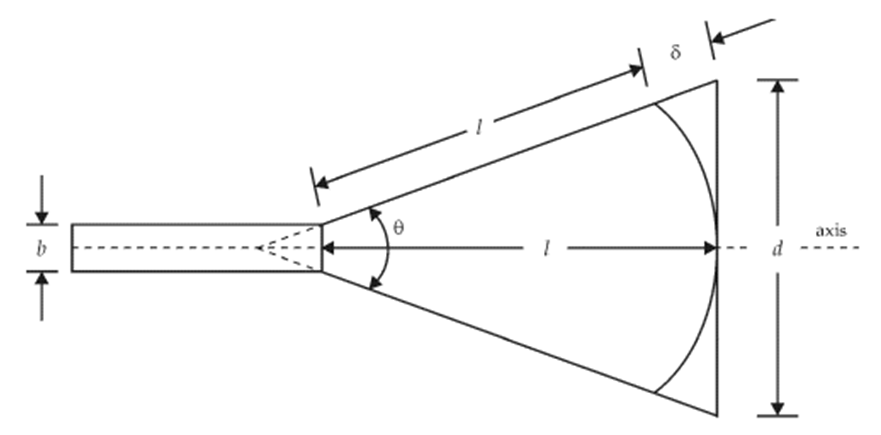Table of Contents
Horn Antenna
The antenna which has the shape of horn is called as ‘Horn Antenna’. Its shape is as because of a waveguide has one end of which is flared out.
A waveguide is a hollow metallic tube and in this metallic tube EM waves travels. When the waveguide is excited at one end and open at the second end, it radiates but this radiation is very poor and non-directive pattern results because of the mismatch between the waveguide and free space. For improving this radiation the mouth of the waveguide is flared out, than the radiation efficiency, directive pattern and directivity will improve.
Types of Horn Antenna:
- Sectoral horn antenna
- Pyramidal horn antenna
- Conical horn antenna
The Sectoral horn is of two types:
- H-plane Sectoral horn
- E-plane Sectoral horn
A Sectoral horn is a horn in which flaring exists only in one direction. If flaring is along the direction of the electric field, it is called sectoral E-plane horn. If flaring is along the direction of the magnetic field, it is called sectoral H-plane horn.


Sectoral E-plane Horn
If flaring is along E and H, the horn is called pyramidal horn. It has the shape of a truncated pyramid.

The basic parameters of horn antenna are described below
δ = path difference
l = axial length
d = aperture dimension
θ = flare angle

Operation
- The electromagnetic wave propagation in a waveguide is different from that of free space due to the waveguide impedance is deferent to the free space impedance.
- The conducting walls are restricting the propagation of waves and waves will reflect again and again in the waveguide.
- When the wave will reach the mouth of the waveguide, waves spread laterally and wavefront becomes spherical.
- At the mouth of the wave-guide, there exists a near-field region where the wavefront is a complicated one.
- This is considered to be the transition region where
change of propagation from waveguide to free space takes place. - As the waveguide impedance and free space impedance do not match, walls of the waveguide are flared out. This flared out structure is called a horn.
- The flaring provides impedance matching, more directivity, and narrow beamwidth.
- Horn produces a uniform plane wavefront with a larger aperture in comparison to a waveguide. As the aperture is large, directivity is high.
The design equations of horn antenna are:
\theta = 2\tan^{-1}\left ( \frac{d}{2l} \right )=2\cos^{-1}\left ( \frac{l}{l+\delta} \right )and
l = \frac{d^{2}}{8\delta }Half-power beam width (HPBW) of optimum flared horns are
\phi <em>{E}=\frac{56\lambda }{d</em>{H}} degrees \phi <em>{H}=\frac{67\lambda }{d</em>{H}} degreesHere,
ϕE = HPBW in E-plane
ϕH = HPBW in H-plane
dE = aperture in E-plane in free space wavelength
dH = aperture in H-plane in free space wavelength
Salient features of horns
- Horn becomes small if the flare angle is small. Its radiation pattern is directive, wave front is spherical, mouth area is small and its directivity is small.
- Flare angle is related to axial length.
- If θ = 15°, when l/λ = 50, the beam width is 23° and directivity is 120.
- Directivity of pyramidal horn is more as the flare is in more than one direction.
- Its directivity is not as high as that of paraboloid.
- It is used as radiator.
- It is easy to use with the waveguide.
- It is used as primary antenna for paraboloid.
Applications of horns
- Horn Antenna uses for moderate gains at microwave frequencies.
- It is used as a primary or feed element in a dish antenna.
- Horn antenna is used for measurement of different antenna parameters in laboratories.



